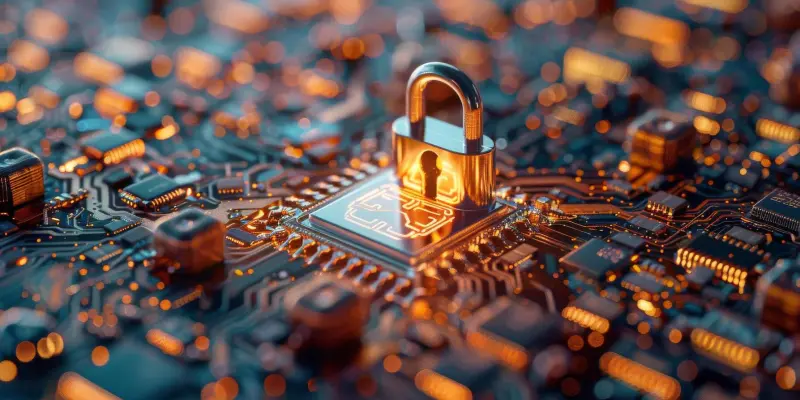In a digital age where critical infrastructure is the backbone of modern society, the security of industrial control systems (ICS) and operational technology (OT) is of paramount importance. These systems underpin essential sectors such as energy, oil and gas, and transportation. Yet, despite the vital role these industries play, they have become increasingly susceptible to cyber threats posed by unsophisticated hackers. A recent advisory jointly issued by the FBI, Cybersecurity and Infrastructure Security Agency (CISA), the Department of Energy (DOE), and the Environmental Protection Agency (EPA) underscores the vulnerabilities these systems face. While novice hackers may lack the sophistication of high-profile cybercriminals, their potential to significantly disrupt critical infrastructure cannot be underestimated. As the landscape of digital threats evolves, the importance of addressing these vulnerabilities becomes ever more pressing. This advisory serves to highlight both the risks associated with unsophisticated hackers and the necessary measures to protect against them.
Vulnerabilities in Critical Infrastructure
The advisory brings attention to the pressing vulnerabilities in critical infrastructure, particularly within the oil and gas industries. As these sectors continue to integrate digital technologies into their operational frameworks, they inadvertently increase their exposure to cyber threats. The oil and gas industry, known for its intricate network of ICS and OT systems, is highlighted as a prime target due to its susceptibility to disruption and the potential cascading effects on global supply chains. Meanwhile, sectors such as energy and transportation are not immune to these threats; they, too, must contend with the challenges posed by unsophisticated hackers. These hackers have, at their disposal, internet search engines capable of locating exposed OT networks, thus simplifying their infiltration efforts. While these individuals may not possess advanced hacking skills, their ability to exploit basic system vulnerabilities poses a significant risk. The ease with which these critical systems can be accessed underscores the urgent need for improved cybersecurity measures across industries.
One of the key concerns is the systemic deficiency in current cybersecurity practices, particularly in OT environments. These systems often remain interconnected with public networks or are inadequately secured, making them enticing targets for potential cyber adversaries. Inadequate password protection further compounds this vulnerability, as default passwords are rarely changed and are therefore easily guessable. Unlike the IT sector, which has matured in its cybersecurity stance, OT often lags behind, leaving critical infrastructure sectors exposed to even the most rudimentary attacks. The need for a paradigm shift in how these systems are protected is crucial, requiring a reevaluation of existing security protocols. Strengthening cyber defenses means going beyond mere compliance; it necessitates proactive measures that can anticipate and mitigate cyber threats before they manifest. This calls for increased investment in cybersecurity infrastructure, greater awareness of potential risks, and a concerted effort to adopt best practices across the board.
Protective Measures and Expert Recommendations
Enhancing cyber hygiene emerges as a pivotal measure in safeguarding critical infrastructure from unsophisticated hackers. Recommendations include disconnecting OT networks from the public internet and using private IP networks to limit external exposure. This, combined with employing Virtual Private Networks (VPNs) and enabling phishing-resistant multifactor authentication, can create substantial barriers for potential intruders. Changing and strengthening default passwords is equally crucial; this reduces the risk of easy exploitation by attackers using commonly known default credentials. While these recommendations may seem basic, their effective implementation could deter unsophisticated threat actors who depend on simple vulnerabilities for access. Paul Shaver, Mandiant’s global practice lead for OT/ICS security, emphasizes the enduring importance of establishing robust perimeters and creating environments that are defensible against evolving threats. His insights underscore the necessity of proactive measures and reinforce the need for a well-structured cybersecurity framework. Establishing a solid defense perimeter involves adopting a multifaceted approach that integrates technology, personnel training, and constant vigilance. Additionally, regular assessments and updates of cybersecurity protocols can ensure that protective measures remain relevant and effective. The advisory’s recommendations serve as a clarion call for organizations to prioritize cybersecurity and adapt to the shifting threat landscape. With increasing frequency and complexity of cyber threats, the adoption of comprehensive security strategies becomes imperative for safeguarding critical infrastructure.
Moving Toward a Secure Future
In our digital world, the security of industrial control systems (ICS) and operational technology (OT) is absolutely essential as these systems are the backbone of our modern society’s critical infrastructure. They support crucial sectors, including energy, oil and gas, and transportation, yet they face growing cyber threats from hackers with limited skills. Recently, the FBI, Cybersecurity and Infrastructure Security Agency (CISA), Department of Energy (DOE), and Environmental Protection Agency (EPA) issued a joint advisory warning about these vulnerabilities. While these hackers might lack the sophistication of elite cybercriminals, they can still disturb critical infrastructure significantly. As cyber threats rapidly evolve, addressing these concerns becomes increasingly urgent. The advisory highlights both the threats posed by these unsophisticated hackers and the necessary actions to protect systems against them, emphasizing the need for enhanced security measures.

